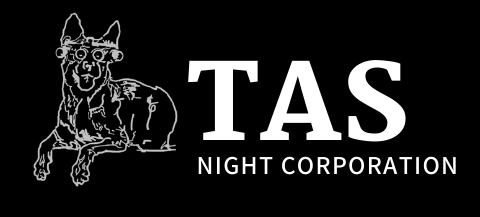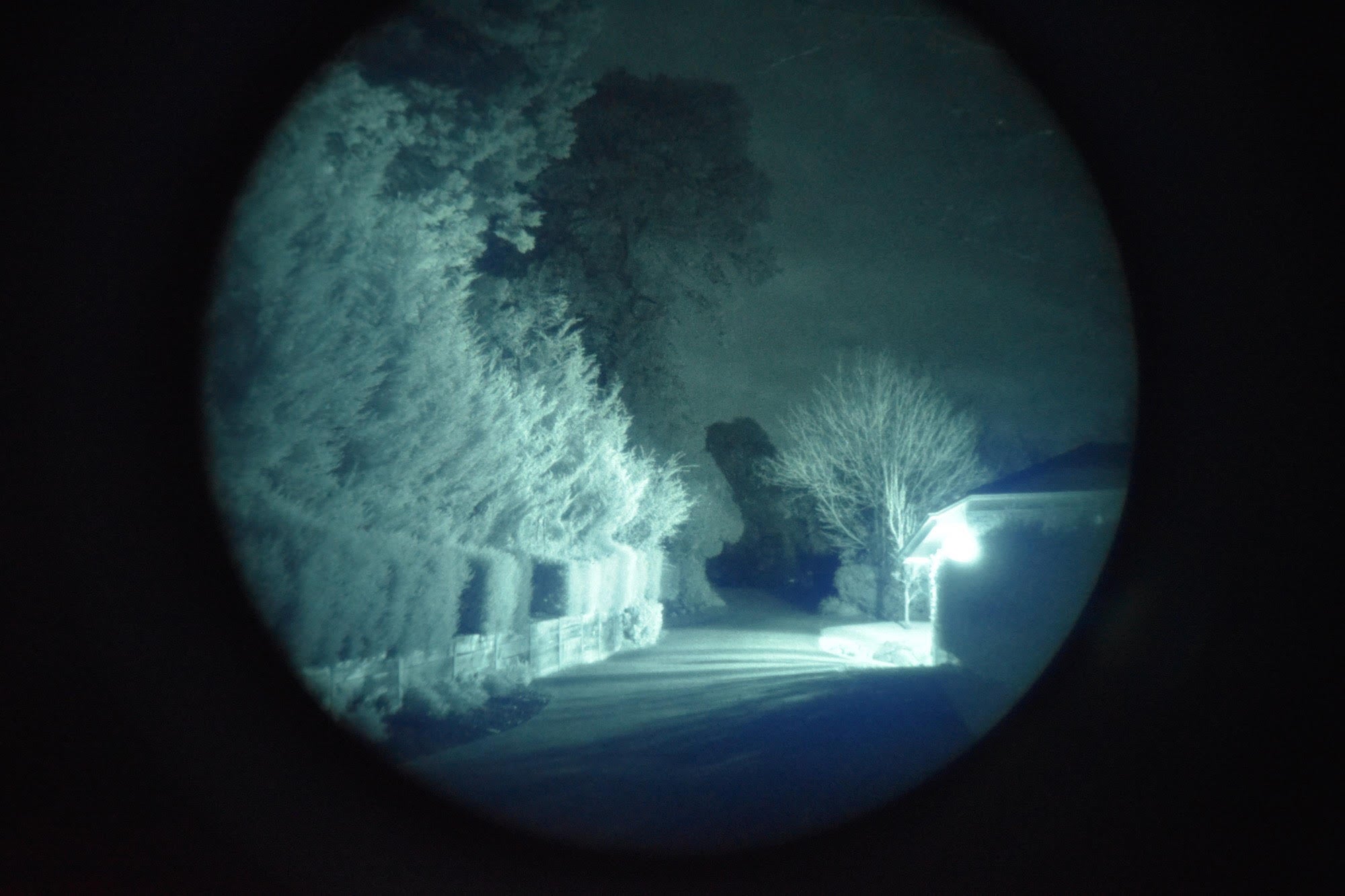WHAT IS NIGHT VISION?
NIGHT VISION uses modern technology known as Image Intensifier Tubes (IIT's) to amplify existing light to produce an image which can be seen by the human eye, many of such lights are in the INFRARED spectrum. These tubes are analog and show exactly what you are looking at in real time, they do not use cameras or anything of the sort. There exists digital systems, such as Night Vision cameras, which can be fun to play around with however for the average person, the technology we have access to is currently not sufficient enough to produce a usable image in most conditions, without supplementary infrared lighting or illumination. Image intensifier tubes amplify all light, and therefore are not magic. If there is no light, then there is also nothing for the tube to see, therefore nothing for you to see.
INTENSIFIER TUBES are the heart of all analog night vision devices and are usually the make or break on whether a unit can be considered good, average, or bad. There are many factors to take into account when purchasing a night vision device, most of which derive from the specifications of the image intensifier tube the unit comes equipped with, or that you are choosing. Let's discuss that.
TUBE SPECIFICATIONS are usually provided by a seller in means of a data sheet, which contains measurements taken by the factory upon completion of the tube assembly. Different generations of image intensifier tubes have different thresholds of values.
CONTINUED.
The most common way to measure a tube's performance is by using an equation referred to as the FIGURE OF MERIT (FOM). FOM is equal to Resolution x SN/r. When choosing a unit, it is important to consider which FOM value you want, as it will generally dictate it's performance. It is also important to request specification sheets if possible, which is a part of our HAND SELECT process, this is due to wanting a balance between Resolution and SNR. Most users will not be able to tell the difference in increments of 100FOM, however at 200 and above the difference is quite notable. Resolution is measured in LINE PAIRS PER MM (lp/mm) which is shown below. It is the tubes ability to contrast the difference between pairs of white and black lines in varying sizes in low light conditions. The more lines the tube can see, the higher the resolution. Signal to noise ratio is the amount of noise (fuzz) in the tube. As well as FOM, Gain is also an important metric to consider, as it will indicate the brightness of your tube. EBI and Halo are also very important to most users. EBI is Equivalent Background Illumination, which is kind of like when you turn on a TV and it displays that black fuzz. Halo is the size of light sources, for example if you have a tube with a high Halo, street lights will have a large glow around them, whereas lower halo tubes will be smaller. Lower EBI, lower Halo tubes are important specifications to look for when purchasing.
IN SUMMARY: Look for: Low Halo, Low EBI, High Gain, High Resolution and High SN/r.
GENERATIONS OF IMAGE INTENSIFIER TUBES are classified by the limitations of technology used to create a tube. You will see Generation 2+ and Generation 3 image intensifier tubes for sale most frequently. Most buyers will immediately assume that because Gen3 is the highest, it is automatically better, however this is not exactly true. Whilst Gen3 IIT's can be better, it is usually dependent on the situation which the device will be utilized. For example, Gen2+ tubes have lower gain and are therefore less sensitive to light and protect themselves better, which is useful for urban environments or areas with high light pollution. However, Gen3 tubes have superior gain therefore making them more useful in areas with extremely low light. This does not mean that either are useless in their weak areas, both generations of tubes will perform very well in both conditions if specifications, such as Resolution, Signal to Noise Ratio (SN/r), Halo and EBI are similar. It is important to note, that whilst Gen3 tubes will outperform Gen2+ tubes in low light conditions, the images produced by Gen3 in a situation where Gen2+ cannot see anything, is usually not far better. There are good comparisons on YouTube showcasing the differences in IIT in varying light conditions.
PROTECTIVE FEATURES OF AN IMAGE INTENSIFIER TUBE includes autogating, bright source protection (BSP) and automatic brightness control (ABC). At a very minimum, all image intensifier tubes have BSP and ABC, this allows tubes to protect themselves when pointed at brighter lights such as a full moon, street lights, flashlights etc. Autogating is the process of a tube lowering the voltage supplied to it when it has higher amounts of light entering, such as when a light is turned on, the tube will decrease voltage to protect itself from damage. These protective features also allow tubes to guard themselves from muzzle flash, explosions and lasers. A tube will be damaged from bright lights if it is exposed to them for a prolonged period of time, for example, you forget to turn off your goggles and leave them pointing at a car's headlights. You will then notice defects such as blemishes or ghost images, which we delve into below.
It is always the buyer's responsibility to ensure their goggles are always protected from bright lights, as to avoid any potential damage. It should be noted that the brighter the light is, the faster it will damage your tube. Even if a tube is powered off, if the lenses are not covered, light can still enter the tube and cause damage. Always be sure to cover your lenses and remove your batteries when you are finished with your goggles, to ensure they do not become damaged.
DIFFERENT TYPES OF IIT
IMAGE INTENSIFIER TUBES come in many different shapes, sizes and formats. The most commonly utilised format, which is compatible with nearly every NVG system today is the slim ANVIS MX10160 tube. This IIT is 37mm in diameter, with an 18mm output screen, which produces a 40 degree FOV* for the user.
Most MX10160 tubes use 2 pin contacts to draw their power and are autogain, however there are also MX10160 3-pin contact tubes which allow the user to have manual gain.
All of our PHOTONIS build options utilise 3-pin tubes.
There are also MX11769 tubes, which usually have a pigtail EGAC connector which controls the gain of the tube (manual gain). These are compatible with our PVS-14 variants, however for other manual gain housings such as the BNVD-1431, modification such as soldering is required.
For MX10160 2-pin and 3-pin tubes, there are also smaller tubes with a 16mm output diameter. These tubes are generally cheaper and much lighter, however they trade these in return for a smaller FOV of 37 degrees.*
MX10130 tubes, also known as FAT ANVIS 43mm tubes, have the same output screen diameter of 18mm and same FOV, are utilised by older systems such as the PVS-7 and cheaper housings, like the Chinese M2021 housing. They produce a non-inverting image and require specific lenses to flip the image.
There are many more formats of image intensifier tubes which can be found in older devices and analog scopes, however we will not cover those as they are not commonly used.
*This is the field of view produced when used with standard mil-spec PVS-14 lenses.
DIFFERENT COMPONENTS OF NIGHT VISION
-
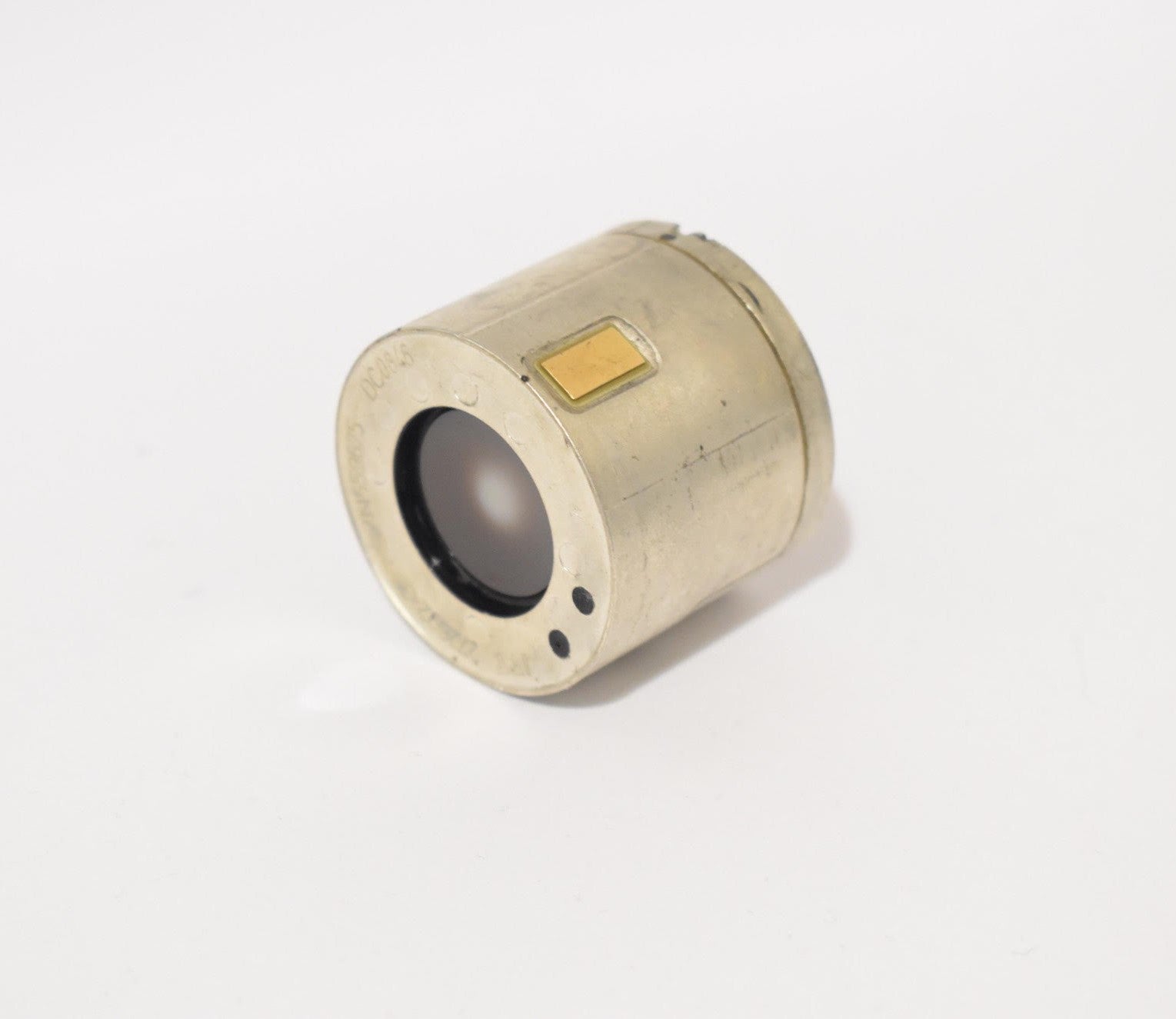
IMAGE INTENSIFIER TUBES
The heart of all Night Vision devices, no two are the same. Every intensifier tube will be finished differently and perform differently. For our binocular builds, we always pick the closest matching tubes to ensure the user has the best experience.
-
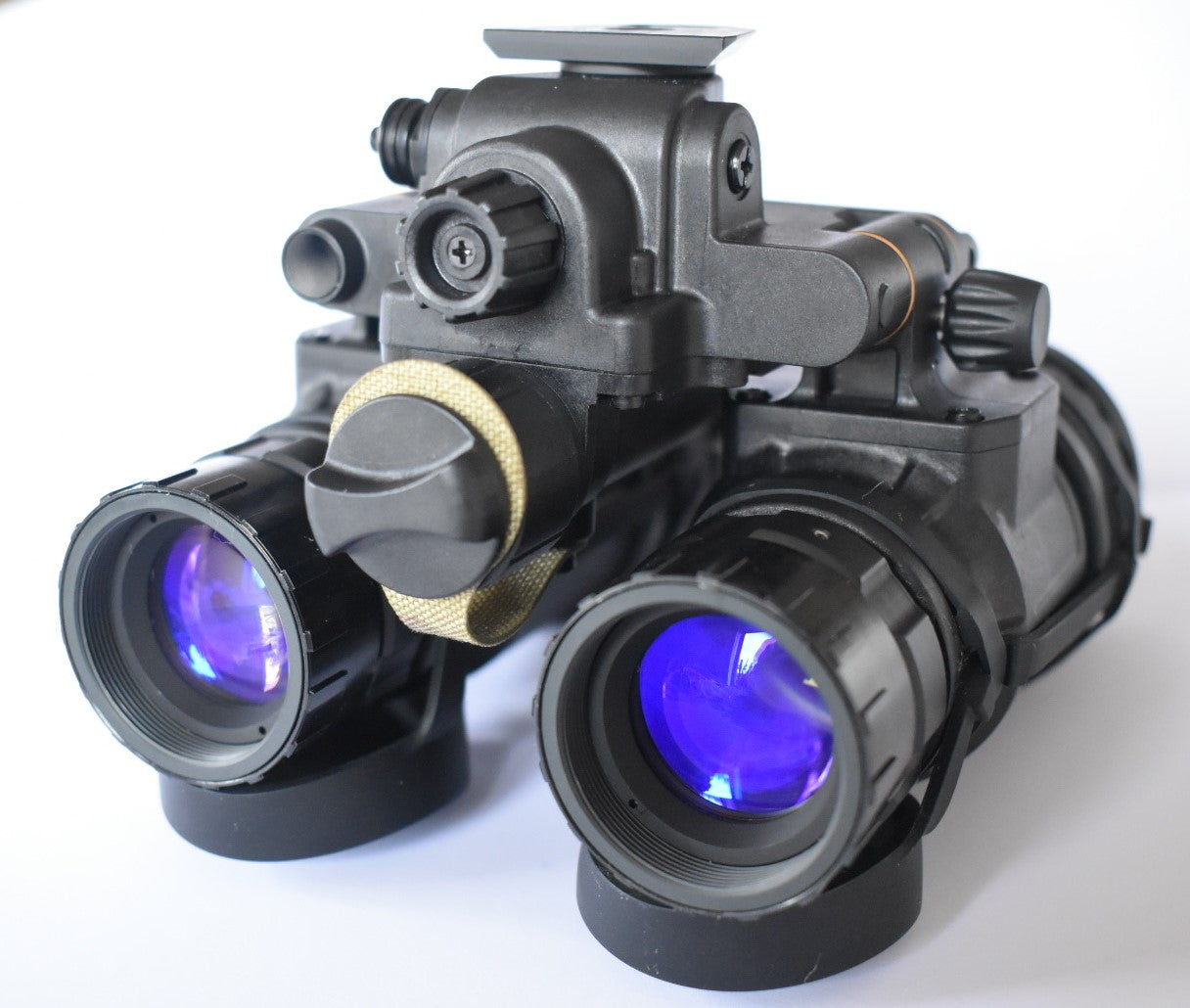
LENSES
No matter how good your tube is, if you couple your goggles with cheap lenses, you will bottleneck it's performance. We are proud to offer milspec lenses across all of our goggles at an affordable price. Milspec lenses conform to minimum standards.
-

HOUSINGS
Housings hold everything together. It is important for buyers to have a full understanding of the housing they are purchasing, as it will determine their satisfaction with what they receive. The differences are usually ergonomic in nature, whether you prefer rigidity over weight, features over weight etc.
EXAMPLES OF TUBE VARIATIONS
-
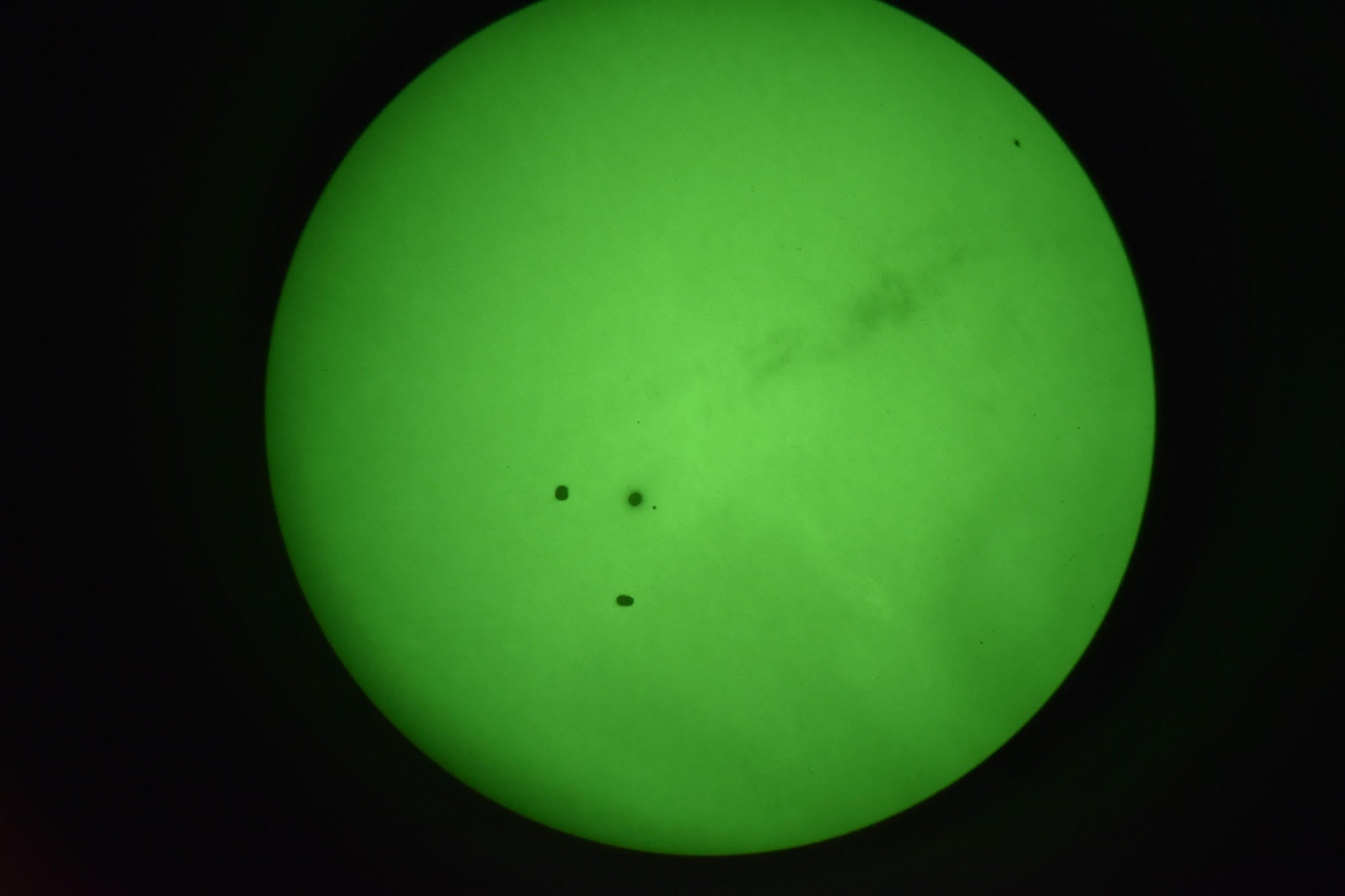
BLEMISHED TUBES
Pictured above is a tube with 3 medium sized blemishes along with shading blemish, also known as a ghost image. This is typical for older tubes, especially ones which are thin-filmed.
-
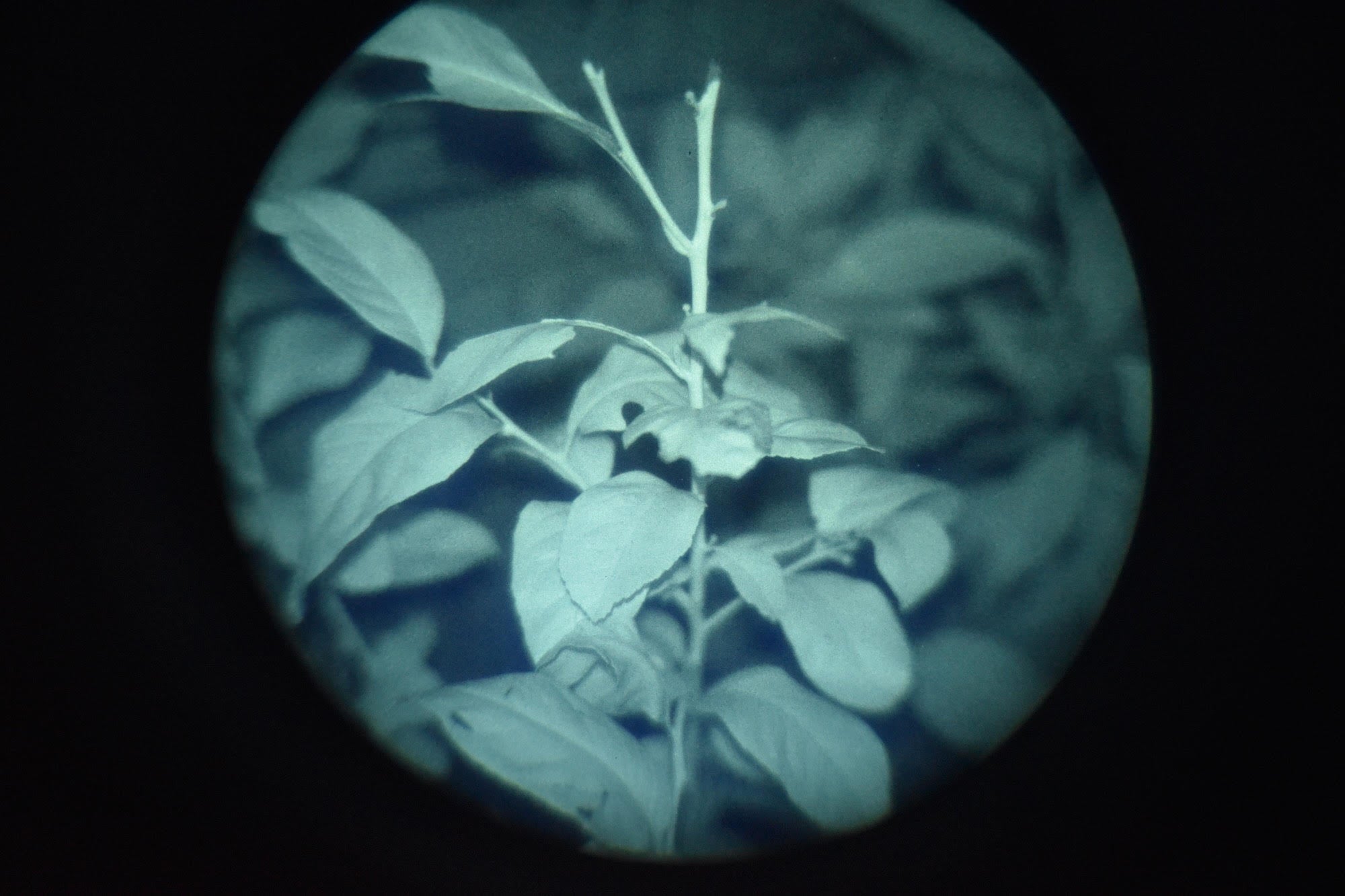
GREEN OR WHITE PHOSPHOR
Image Intensifier Tubes can have Green Phosphor (GP) or White Phoshpor (WP). Whilst some have argued over which is better, GP has been the predominant phosphor colour for years, however it is really just up to personal preference.
-

RESOLUTION
Pictured above is a tube undergoing a resolution test, using a USAF 1951 target. The resolution is tested by determining the maximum number of line pairs the tube can define (lp/mm).
